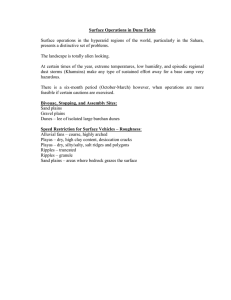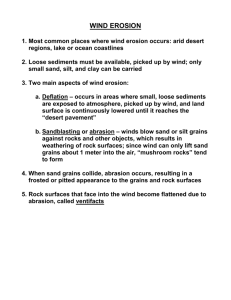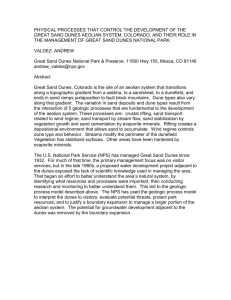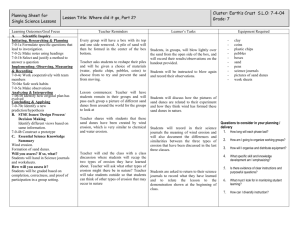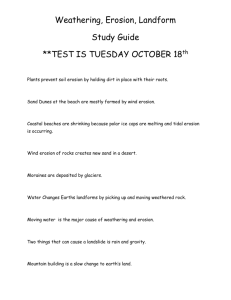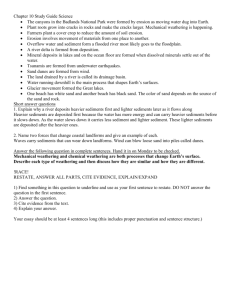LANDFORMS OF DESERT: ~ 01
advertisement
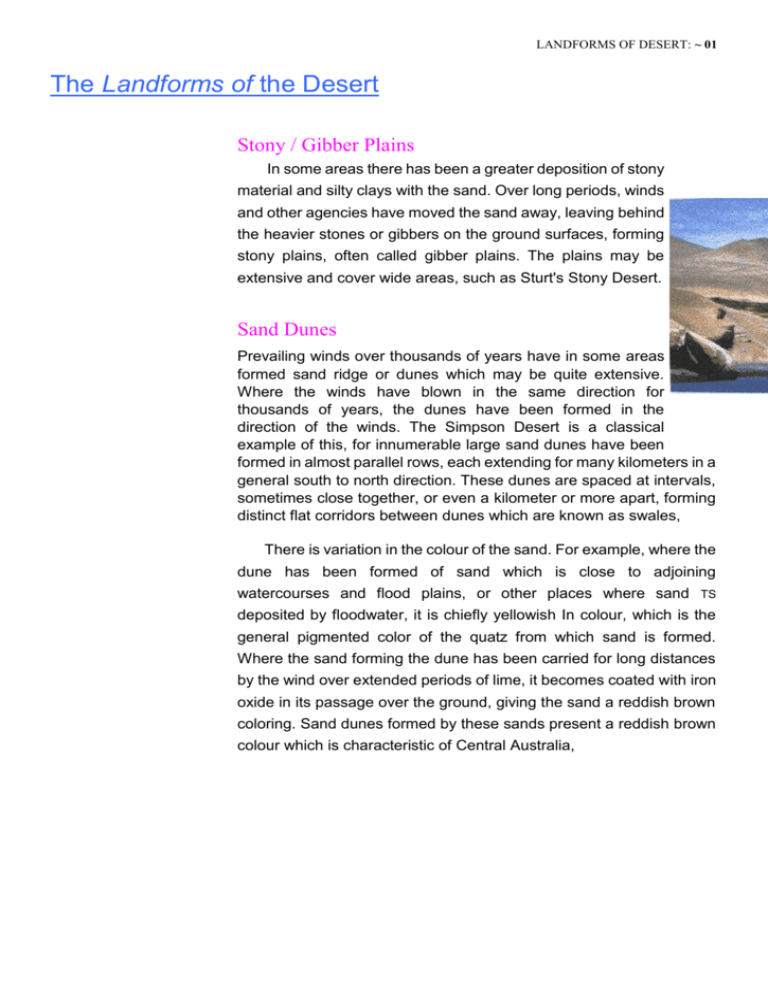
LANDFORMS OF DESERT: ~ 01 The Landforms of the Desert Stony / Gibber Plains In some areas there has been a greater deposition of stony material and silty clays with the sand. Over long periods, winds and other agencies have moved the sand away, leaving behind the heavier stones or gibbers on the ground surfaces, forming stony plains, often called gibber plains. The plains may be extensive and cover wide areas, such as Sturt's Stony Desert. Sand Dunes Prevailing winds over thousands of years have in some areas formed sand ridge or dunes which may be quite extensive. Where the winds have blown in the same direction for thousands of years, the dunes have been formed in the direction of the winds. The Simpson Desert is a classical example of this, for innumerable large sand dunes have been formed in almost parallel rows, each extending for many kilometers in a general south to north direction. These dunes are spaced at intervals, sometimes close together, or even a kilometer or more apart, forming distinct flat corridors between dunes which are known as swales, There is variation in the colour of the sand. For example, where the dune has been formed of sand which is close to adjoining watercourses and flood plains, or other places where sand TS deposited by floodwater, it is chiefly yellowish In colour, which is the general pigmented color of the quatz from which sand is formed. Where the sand forming the dune has been carried for long distances by the wind over extended periods of lime, it becomes coated with iron oxide in its passage over the ground, giving the sand a reddish brown coloring. Sand dunes formed by these sands present a reddish brown colour which is characteristic of Central Australia, Mesas Amongst the interesting rock forms are the mesas which rise starkly above the surrounding plains. These are remnants of ancient times when the land mass was at a much higher level and the hard nature of their upper surface has resisted weathering. The typical mesa has a flat top formed of hard material called a duricrust; the upper part has vertical sides and the lower part is rugged and sloping, formed from the rock debris which falls with continued weathering. In typical weathering patterns, the rock formation beneath the hard upper crust is softer and weathers at a more rapid rate, so, as it falls away, the upper crust is unsupported and breaks away, adding to the rocky debris below. Mesas may be in groups or isolated; they may be very large, such as Mt Conner, or isolated column, for example, Chambers Pillar, a striking rock column situated in the lower south east of the Northern Territory, Saltpans, Saltlakes, Salinas In many areas, various types of salts are dissolved from rocks, such as different forms of calcium (lime and gypsum), common salt (sodium chloride), salts of magnesium (magnesium sulphate-Epsom salts). The salts are carried in solution in water and, as the water rocky hills, near the small settlement of Barrow Creek. The last group of ranges, the Davenport-Murchison Ranges, are situated in a north-west direction, with the northern edges of the range being traversed by the Davenport-Murchison Ranges, midway between Barrow Creek and Tennant Creek, are the unique Devil's Marbles, which are a number of superimposed large rounded granite boulders.
